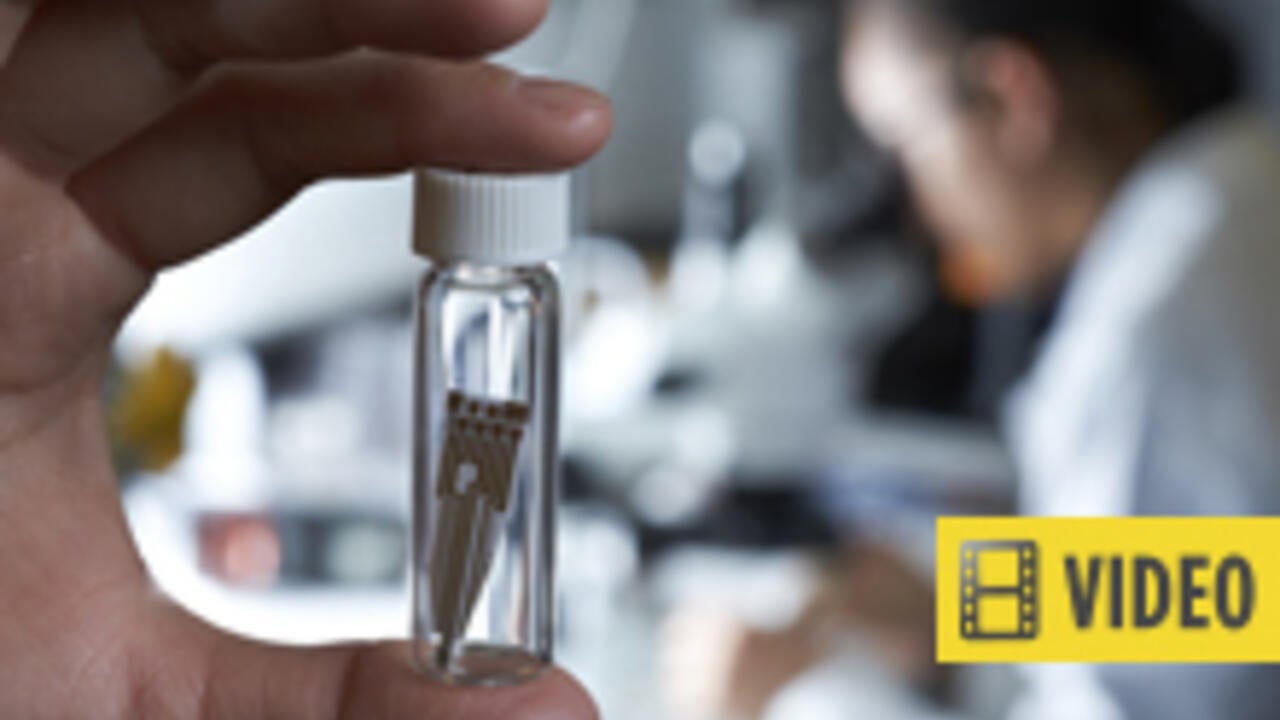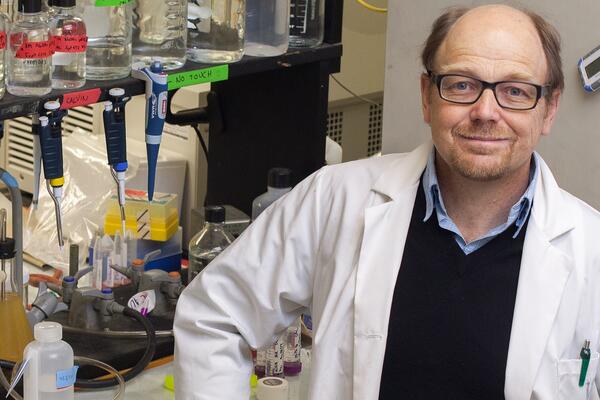
Food safety: Waterloo nanotech device tests for bacteria
Hand-held device could save lives by letting ordinary people test food and water for harmful pathogens

Hand-held device could save lives by letting ordinary people test food and water for harmful pathogens
By Christian Aagaard Marketing and Strategic CommunicationsIt’s about the size of a smooth stone you could tuck into a pocket. Someday it might knock down a Goliath of a problem.
Chemistry Professor Shirley Tang and her research team are developing a hand-held device that finds harmful pathogens in food or water. The first wave of users would range from inspectors in gleaming meat-packing plants to health officials working in developing-world villages that draw drinking water from dubious sources.
The device also has possibilities as a consumer product, kept in purses and backpacks by travellers who want to take charge of their own safety.
“It would change, fundamentally, how public health is provided,’’ says Tang, a member of the Waterloo Institute for Nanotechnology. “It’s a bottom up approach. People could do their own testing. They wouldn’t have to wait for governments to take action.”
One haunting statistic in particular helps drive the research: diarrhea caused by contaminants, bacteria and viruses kills about 2,000 children around the world — every day. Low-cost detection means better prevention, Tang says.
Glucometers used by diabetics to monitor blood-sugar levels serve as a model for the device. Disposable test strips carry an enzyme which reacts with glucose in the blood to create a measurable electrical current.

In the device Tang’s researchers are developing, samples wicked up by a test strip pass through a filtering membrane, across a receptor field and onto a network of carbon nanotubes. Nanotechnology works in an incredibly tiny realm, where atomic properties can be manipulated to create new materials for new purposes.
Minute as they are, nanotube bands printed on strips for Tang’s device test for dozens of pathogens. They “translate” the chemical interaction between the sample and the receptor into electrical signals that expose hidden threats.
The research group has patents and patents pending on the technology at the heart of the device — the membrane, receptors and nanotube network. Last year, the group earned a $100,000 grant from Grand Challenges Canada, a program funded by the federal government.
It’s more than a concept, Tang says of the device. An industrial supporter could push research the rest of the way to a minimum viable product.
Nanotubes, meanwhile, open up possibilities for other inexpensive health-care tools, such as hand-held devices to test people for heart disease. Portability is a big game-changer, Tang says.
“I think nanotechnology will deliver new tools and revolutionize our health-care system by empowering people to self-diagnose and monitor their own health,” she says. “It would also revolutionize our food and environmental safety system by empowering people to monitor, report and seek a fast response.”

Read more
Here are the people and events behind some of this year’s most compelling Waterloo stories

Read more
Discovery of a thick atmosphere on a lava world reshapes our understanding of rocky exoplanets

Dr. Brian Dixon, professor of biology at the University of Waterloo says there is a link between cold weather and getting sick. (University of Waterloo)
Read more
Waterloo researcher shares why we get sick when the mercury dips
The University of Waterloo acknowledges that much of our work takes place on the traditional territory of the Neutral, Anishinaabeg, and Haudenosaunee peoples. Our main campus is situated on the Haldimand Tract, the land granted to the Six Nations that includes six miles on each side of the Grand River. Our active work toward reconciliation takes place across our campuses through research, learning, teaching, and community building, and is co-ordinated within the Office of Indigenous Relations.